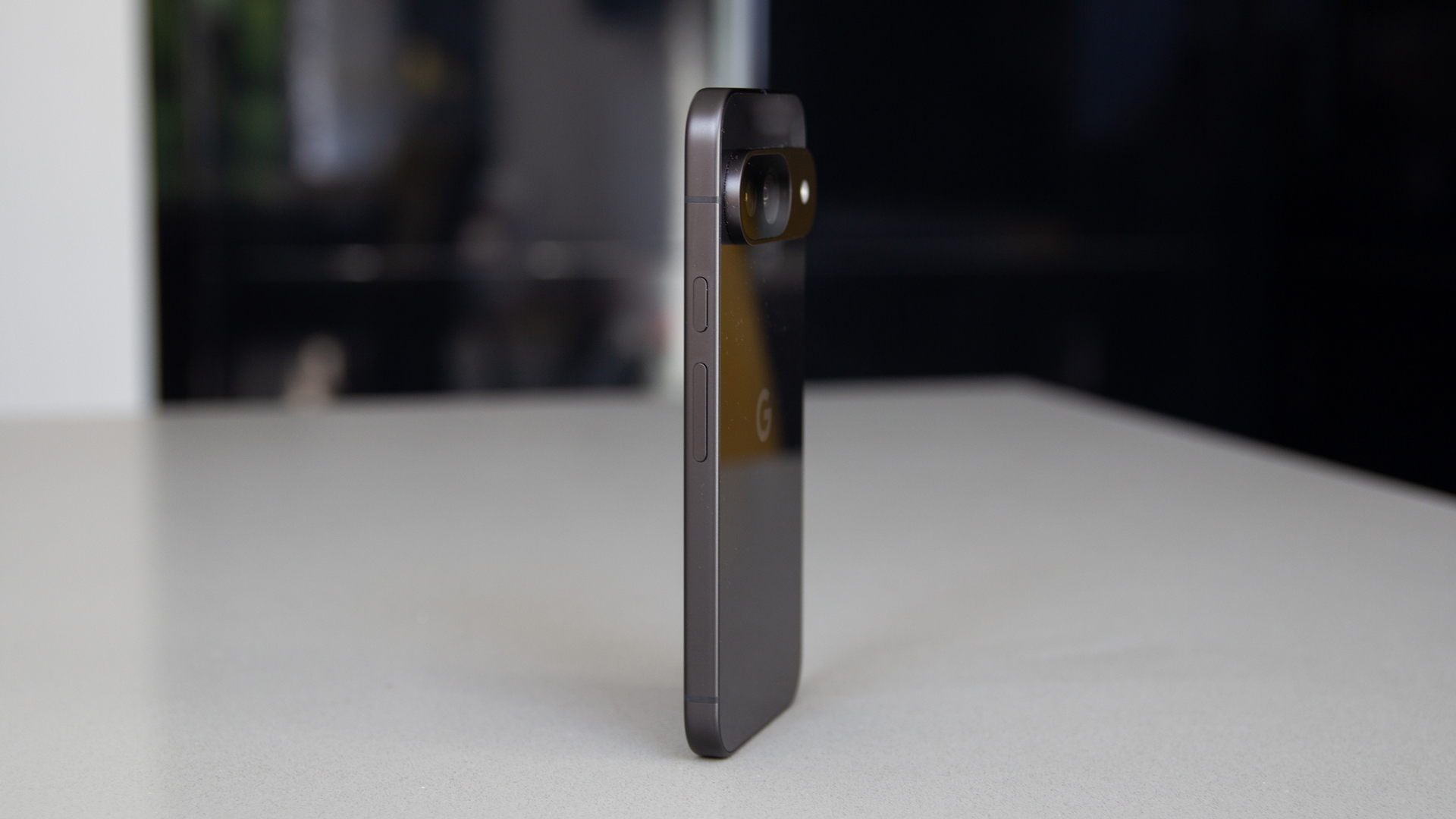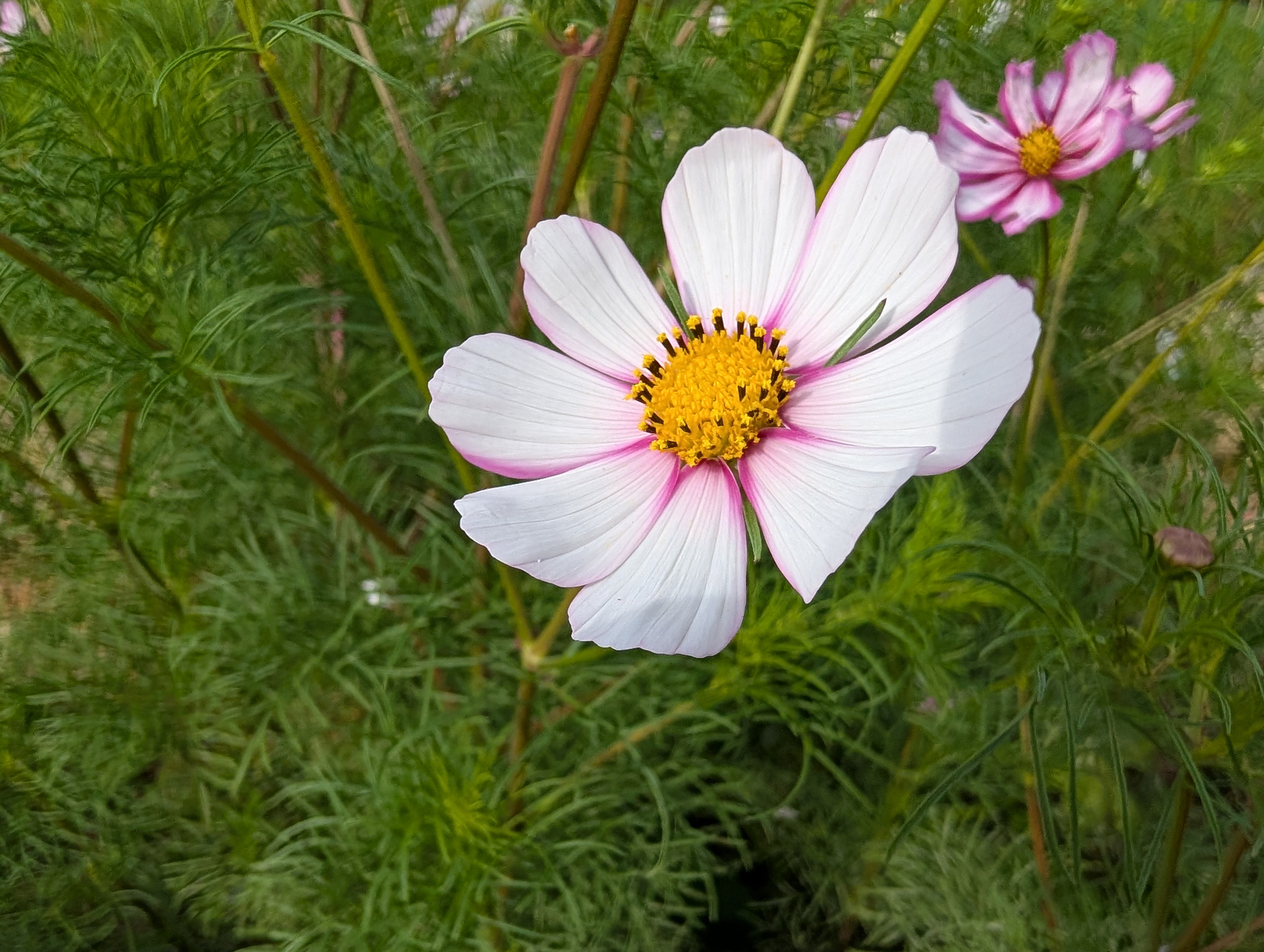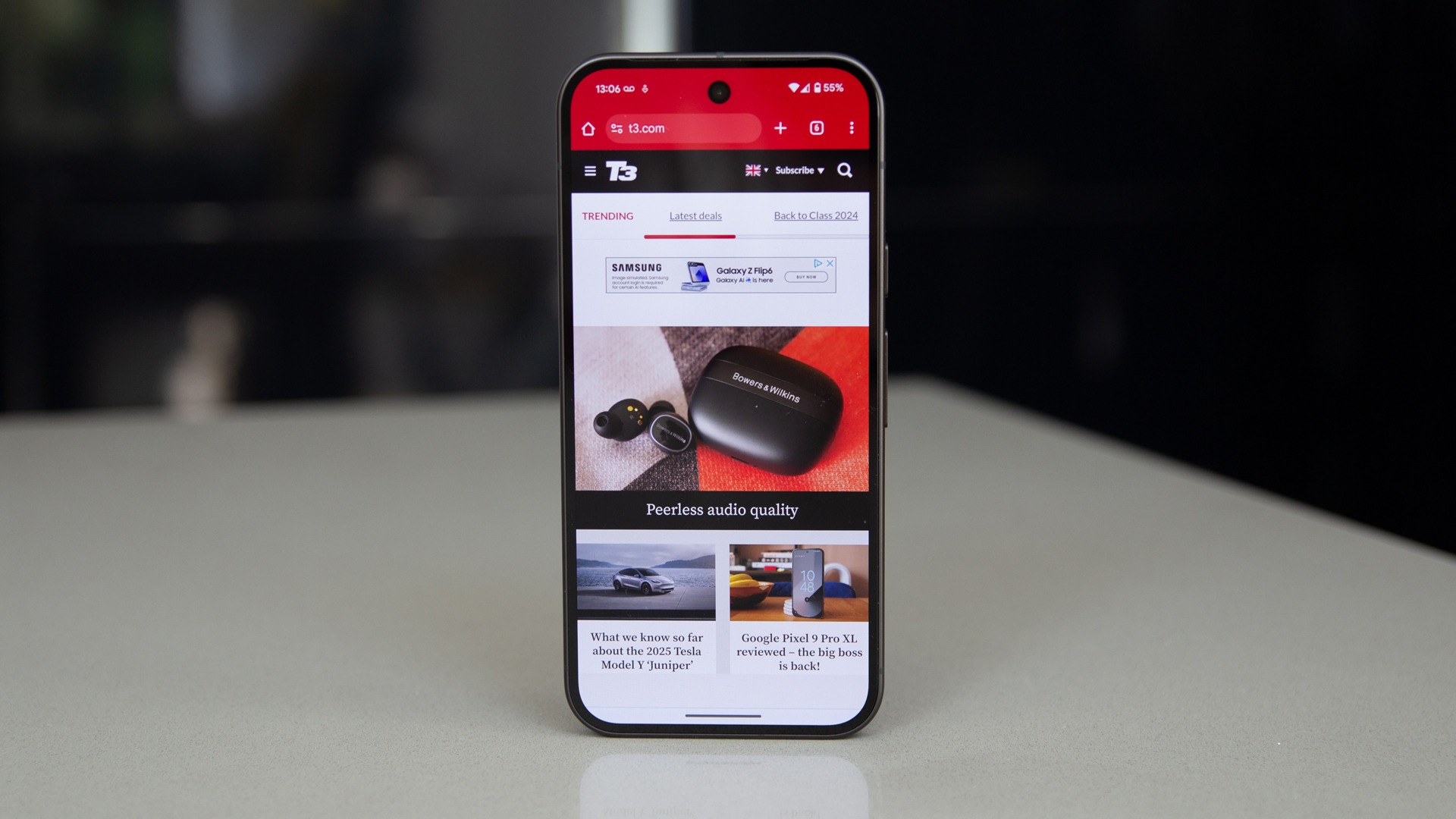
Google realigned its Pixel phones in 2024 to better match Apple's equivalent iPhone line-up. The Pixel 9 on review here is the smallest of Google's trio – and a competitor for the iPhone 15. The Pixel 9 Pro squares up against the iPhone 15 Pro, while the Pixel 9 Pro XL sits against the iPhone 15 Pro Max.
That means, for the first time, there's a choice of a smaller Pixel handset – with the 6.3-inch Pixel 9 serving as the entry-level device (until the inevitable Pixel 9a launches in 2025), while the same-size Pixel 9 Pro delivers a boost in hardware. The Pro XL model, as the name suggests, goes larger, at 6.8-inches.
That sees the entry-level Pixel forego the 5x optical zoom camera boost of its Pro siblings, but if you're looking for one of the best small phones then it's a tidy compromise. Overall, the Pixel 9 is well-positioned to be an excellent day-to-day device at a slightly more affordable price than the Pro.
Google Pixel 9: Price & Availability
The Google Pixel 9 has seen a slight price bump over the Pixel 8 from 2023, so it launches at £799 / $799 / AU$1349 for the 128GB version. There is also the option for 256GB storage, at a higher price.
The Pixel 8 launched at £699 / $699 / AU$1199, so there's a clear price jump – and whether that's worth it or not I'll cover in this review – but the other consideration is how close the future 'A' series device will be. The Pixel 8 and Pixel 8a are very close in experience and I suspect that part of the Pixel 9 repositioning is to create a bigger gap between these models.
At any rate, Google is a frequent discounter, often reducing prices during the life of its phones in a way that Apple rarely does. So if you're not buying on day one, there's a good chance that the price will drop before the end of the year and certainly as we move into 2025.
Google Pixel 9 review: What's new?

The Pixel 9 has a refreshed design compared to the Pixel 8 with squarer edges. The phone is a little larger, but it's a little slimmer too. The biggest change is to the design of the camera housing on the rear of the phones.
The display is a touch larger, at 6.3-inches, and this is thanks to a slightly smaller bezel. The display itself is brighter, but it's much the same positioning as on the Pixel 8.
There's new hardware with Tensor G4, giving a bump over the Tensor G3 previously, and this is supported by 12GB RAM. That also differentiates the Pixel 9 from the Pro models (which have 16GB RAM), with Google saying the memory bump is mostly about supporting the artificial intelligence features. The battery is now 4700mAh, also a little larger.
In terms of camera hardware, the Pixel 9's ultrawide is moved to the 48-megapixel sensor and f/1.7 lens that you'll find on the Pro models, so that's a definite boost over the Pixel 8, while the front camera now benefits from autofocus. It's basically the front camera from the old Pixel 8 Pro. Google says there's a new imaging pipeline, however, to boost performance overall.
There are new software features, including the Add Me camera feature. There's the new Screenshots app and Pixel Studio, as well as Gemini as the default voice assistant – but there's every chance these features will arrive on older Pixel phones too.
Google Pixel 9 review: Design and display

There's a fresh new design for the Pixel, with the camera housing on the rear no longer attached to the frame. It's not actually much bigger than the 'camera bar' stylings from the previous few generations of Pixel phones, but it's more distinct as it's a separate island. Some will undoubtedly say it's huge, but I like it – and it comes with some advantages.
The first is that this phone doesn't wobble when you put it down flat on a table, which many of the best phones do these days. The second advantage is that this design is much better for cases than previously. Cases and covers on the old Pixel devices were prone to failing around the camera, because of the way it met the frame, but now a case can have wider sections around the camera, so can be stronger overall.
The back of the Pixel 9 is finished in Gorilla Glass Victus 2 – so it's stronger than before – and it's glossy. The frame, by contrast, is matte – but the squared finish is what really gives this phone its smart new looks. I think it works really well on this 6.3-inch device, imparting a higher sense of quality than previous Pixel phones.
The display has grown to 6.3-inches because of a small reduction in the bezel, but it's very much the same experience as the previous phone – but with one big difference. Google has boosted the brightness, with 1800 nits in normal use, peaking at 2700 nits. This isn't as bright as the Pixel 9 Pro models, but it's still an impressively bright display – much brighter than the iPhone 15's panel.
The advantage this brings isn't in day-to-day use, it's in the presentation of HDR (high dynamic range) content. That's especially evident from the camera, where you'll see real brightness in the highlights. While that can have an effect on movie content you might be watching, I find it most obvious in making the photos and videos you shoot even more glorious to look at.
Be warned though – the HDR pop from those photos gets lost when you edit them and doesn't always transfer to social media if you're sharing. The other thing to watch out for is the auto-brightness. This can be a little reserved, quick to dip the levels and rather more reluctant to run up to full brightness – a trait also noticed in T3's Pixel 9 Pro XL review, but one we hope will be tweaked by software updates.
This auto-brightness control, presumably for the sake of battery life extension, can flatten things slightly. Bump it up and everything looks so much better though. Google could learn something from Samsung in this regard, with Galaxy S phones much better at giving you higher brightness all the time – but not necessarily better battery life as a result.
Finally, a minor detail is that this isn't an LTPO display, so without that technology it's either 120Hz or 60Hz – you don't get the benefit of adaptive refresh rates here.
Google Pixel 9 review: Performance & battery

The Pixel 9 has new Google Tensor 4 hardware, which boosts the performance over the Pixel 8, while increasing the efficiency for better battery life. But it misses out on the vapour chamber that's been added to the Pro model to boost the cooling. That's going to have an impact on those who plan to use the Pixel 9 as a gaming device, because it can't offer the same degree of cooling that the Pro models do.
While the performance of the Pixel 9 is great day-to-day, it's more likely to get warmer during intensive use, resulting in a drop in performance. During a session on Call of Duty Mobile I found it was noticeably warmer after about 30 minutes of play. That's not going to bother those who want to use the Pixel 9 more casually, but it's worth being aware that even though it has the same hardware as the Pro phones, in more extreme circumstances the performance might not match them.
The battery is a little larger than previously, with this phone just about getting through 24 hours. I've found that I had to charge the Pixel 9 most evenings, so it doesn't have the endurance that the Pixel 9 Pro XL does either. It also sticks to 27W charging for wired and up to 15W wireless charging – again, the XL is faster. As is typical of Pixel devices, these can't compete with the speeds that you'll get from the best Android phones from the likes of Motorola or OnePlus.
Google Pixel 9 review: Some software highs and lows

I'd always thought of the Pixel 8 as the first AI phone, but Google is really hammering that message home in the Pixel 9, with Google AI cropping up all over the place. Leading the charge is Gemini, now the default voice assistant (although you can switch back to Google Assistant if you like). That's boosted by Gemini Live if you're a Gemini Advanced subscriber (£18.99 / $19.99 / US$32.99 a month).
Unlike the Pixel 9 Pro, you don't get a year of free access to Gemini Advanced on the Pixel 9, but you're not really missing out. I've been testing Gemini Live and I've found it very hit-and-miss. For the most part having a conversation with AI hasn't led me to enlightenment. It's clever, sure, but I've found it mostly to be full of generic information that it loves to summarise and repeat.
The new Pixel Screenshots app is a different story, as it catalogues your screenshots and can recall the information within them. If something includes a date, you can add it to the calendar with a tap Need a reminder to cancel Gemini Advanced? Yes, the new Screenshots app will help you do that.
At the same time this is a fractured AI experience. While Screenshots knows those dates, Gemini doesn't know them, because these things are siloed. Gemini Live also doesn't really cross into other areas, feeling like a discussive Google Search session. The camera AI shines, but we're moving further in the direction where it's easier to fake photos and manipulate images.
While Google has some guardrails in place – you can't edit people, for example – you can add things that look bad or change an image drastically. It might be fun for most people, but you can also see how it's contributing to the easy creation of fake images to instantly share on social media.
As for the rest of the software experience, it's slightly odd that the Pixel 9 phones didn't launch on Android 15, but there is 7 years of software support, so you're well covered into the future.
Google Pixel 9 review: Cameras

Google is still drawing the line between the Pixel 9 and the Pixel 9 Pro with the cameras on the back. Sure, there are lots of other details, but simply put, the omission of the telephoto camera is the biggest difference. But the big takeaway from the Pixel 9 is that the main 50-megapixel and ultrawide 48MP cameras are the same as the Pro.
That brings you all the benefits of the versatile Pixel camera, able to shoot in just about all conditions and get great results, whether that's in bright sunshine or low light. You get Night Sight for low-light shooting, you get features like Best Take and Add Me (new for 2024), as well as most of the AI features offered in Google Photos, including Magic Editor – and the new Reimagine and Reframe options.
Reimagine lets you select a part of an image and say what you want there instead and that can be anything as long as it's within Google's guidelines. Reframe will let you take an image and improve that framing – as demonstrated in the duck picture in the gallery below.


Where it can't compete with the Pro is in zoom. The 2x zoom offered by the Pixel 9's sensor cropping is sharp enough and perfectly usable, but quality drops off thereafter, with the maximum digital zoom limited to 8x.
The Pixel 9 also doesn't benefit from Google's Zoom Enhance feature, which is where you can zoom in on a photo and have it corrected using AI – a benefit that the Pro models have. There's also no Video Boost (even though it's an AI-powered off-device process), and no Night Sight Video either.
Finally, you don't get the Pro controls, which mostly amount to full-resolution shooting and options for Raw capture – not a huge loss to most users.






So there's a balance of features offered on the Pixel 9 that focuses on the essentials – and those it delivers with aplomb. There's no doubting that the Pixel 9 delivers an outstanding camera experience.
While the Pixel 9 Pro models now have a 42-megapixel front camera, the Pixel 9 brings the addition of autofocus to its 10.5-megapixel selfie camera. That again boosts the results, but there's still a gap here between the Pixel 9's excellent camera performance and the Pixel 9 Pro's exceptional performance.
Google Pixel 9 review: verdict

The Google Pixel 9 is a premium phone in a slightly smaller package, available at a slightly lower price than the technically more capable Pro models. In day-to-day use, you'll likely never notice the difference between these devices, but once you start making greater demands – gaming or computational photography, for example – then the distinction becomes more apparent.
Is the Pixel 9 worth the asking price? I think it is: it's more expensive than the Pixel 8 from 2023, but it's a better phone too. The boosted display is a great performer, the camera still shines as one of the best out there, and the clean software experience has outstanding support for 7 years.
The Pixel 9 can't quite compete with last year's Pixel 8 Pro, and the AI experience isn't entirely useful just yet, but as a day-to-day phone the small Pixel delivers a big experience.
Also consider
If you can afford a little more, then the Pixel 9 Pro is an obvious choice: it will give you all the benefits of the Pixel 9, with a few additional features and hardware gains.
If you're not looking at Pixel devices specifically, you might consider the Samsung Galaxy S24 – which is also fairly compact and offers long software support, including some clever AI features in the camera.
Alternatively, the iPhone 15 is a natural rival. It has a slightly smaller display, but is otherwise a fairly close package, offering long software support, although this device will miss out on Apple Intelligence and the camera might not compete with Pixel in all areas.







